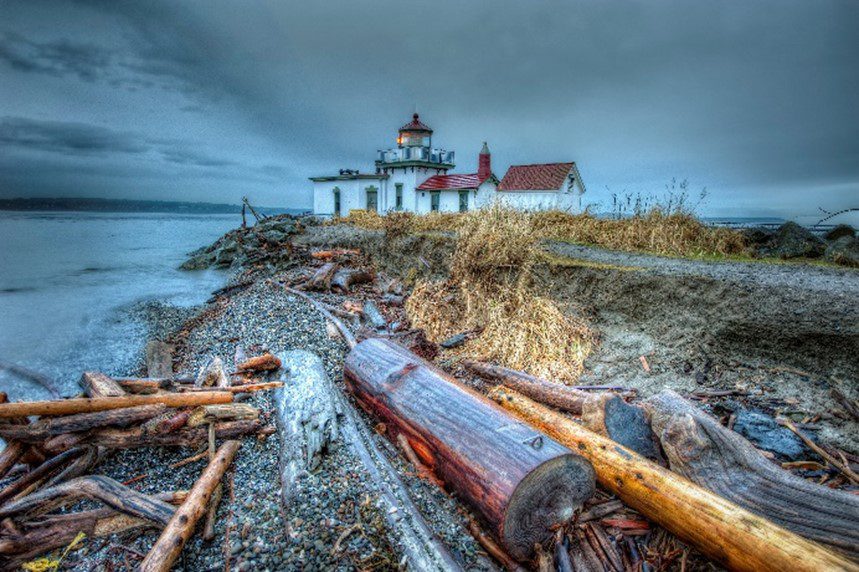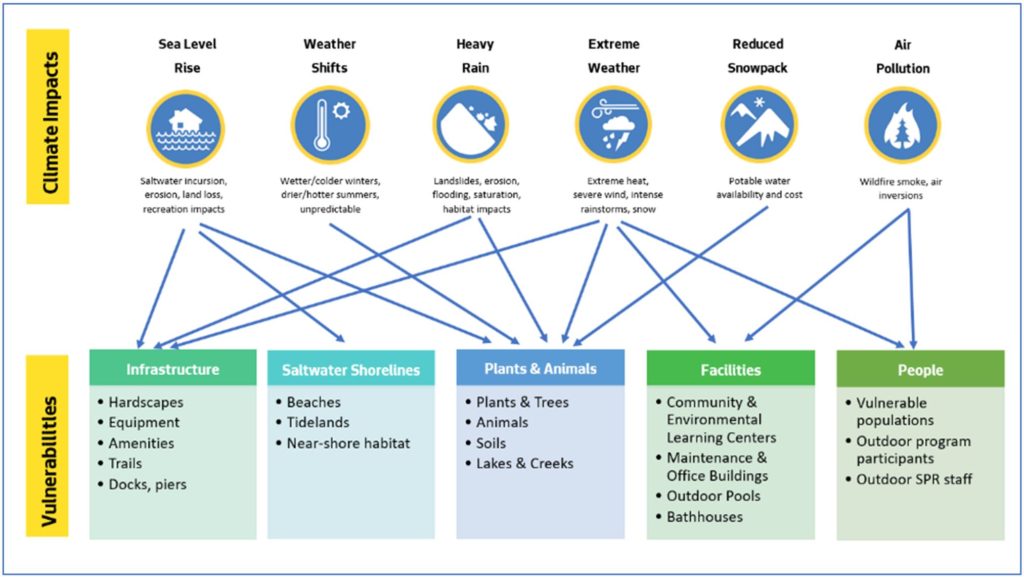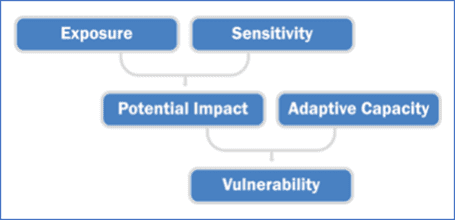
By Todd Burley and Cynthia McCoy

Earth’s climate is changing. The science is clear, and the imperative to act is imminent, both to reduce our carbon emissions and to prepare for the impacts of this changing climate. The World Meteorological Organization, in its 2019 report, states, “Science tells us that, even if we are successful in limiting warming to 1.5°C (34.7° F), we will face significantly increased risks to natural and human systems. The consequences are already apparent. More severe and frequent floods, droughts and tropical storms, dangerous heatwaves and rising sea levels are already severely threatening lives and livelihoods across the planet.” Seattle Parks and Recreation agrees that we must both reduce our carbon emissions and prepare for the impacts of climate change.
Seattle’s Preparing for Climate Change report from 2017 lists many of the challenges we will need to plan for locally. We are already experiencing more extreme heat days (over 86° F) and dealing with the air quality impacts of increased wildfires in the region. Sea level in the Puget Sound region is expected to rise an additional 12 inches by 2035, impacting areas like the Duwamish Valley and our waterfront parks (check out the Climate Explorer for more). And we should expect the continuation of hotter and drier summers and winters with more extreme rain events causing landslides and flooding. Studies like the King County 2020 Strategic Climate Action Plan show how these impacts are born disproportionately by lower-income households and communities of color.

To prepare for this changing climate and become a resilient parks and recreation system, SPR conducted an impacts and vulnerability assessment. This review identified areas of greatest impact, including: infrastructure, shorelines, plants and animals, facilities, and people. We further ranked the vulnerabilities that were identified based upon exposure (the expected severity of the climate change impacts), sensitivity (the susceptibility of the system to the change), and capacity to adapt (current processes or procedures that provide capacity to adapt).

We further identified the magnitude of the impact to financial cost, health and safety, natural resources, and recreation.
The results of the above analyses are expected to be released in SPR’s Climate Resiliency Strategy later this spring. Yet there are many actions being taken today to adapt to the impacts of climate change in our parks and recreation system.
- Infrastructure
- Sea walls are being removed and beaches restored with replenishment of sand, rocks, and woody material at places like Lowman Beach.
- Trails are being improved to adapt to increased heavy rain events.
- Green stormwater infrastructure projects are inspected and maintained regularly.
- Trees are inspected for health regularly.
- Saltwater Shorelines
- Habitat along beaches continues to be restored through the Green Seattle Partnership with invasive removals and planting of native species.
- Plants & Animals
- The Green Seattle Partnership continues to restore urban forests throughout Seattle by removing invasive plants, installing native vegetation and stabilizing slopes.
- Plants are chosen for climate adaptability and to support native species.
- Establishment periods (watering) for new trees and shrubs is being extended.
- Mulching is increasing to help retain water and improve soil health.
- Pollinator gardens are being planted to support birds and insects.
- Facilities
- Heat pumps and clean air systems have been installed in some community centers.
- A solar-powered microgrid system has been installed at Miller Community Center to act as an emergency power source.
- Water reuse is being designed in newer buildings such as the Northgate Community Center.
- People
- Wading pools are being converted to spray parks where possible to conserve water and provide cooling areas.
- Clean air centers have been established at three community centers.
- Trees continue to be planted to provide shade, particularly in heat islands.
As long-term stewards of 6,414 acres of public land, over 30 community facilities, and 485+ parks, Seattle Parks and Recreation is positioned to prepare for the impacts of climate change. We will continue to consider not just the world we live in today, but also the world we and our descendants will live in the decades and centuries ahead. Want to explore tools yourself that you can use to meet the challenges of a changing climate? Check out toolkit.climate.gov.